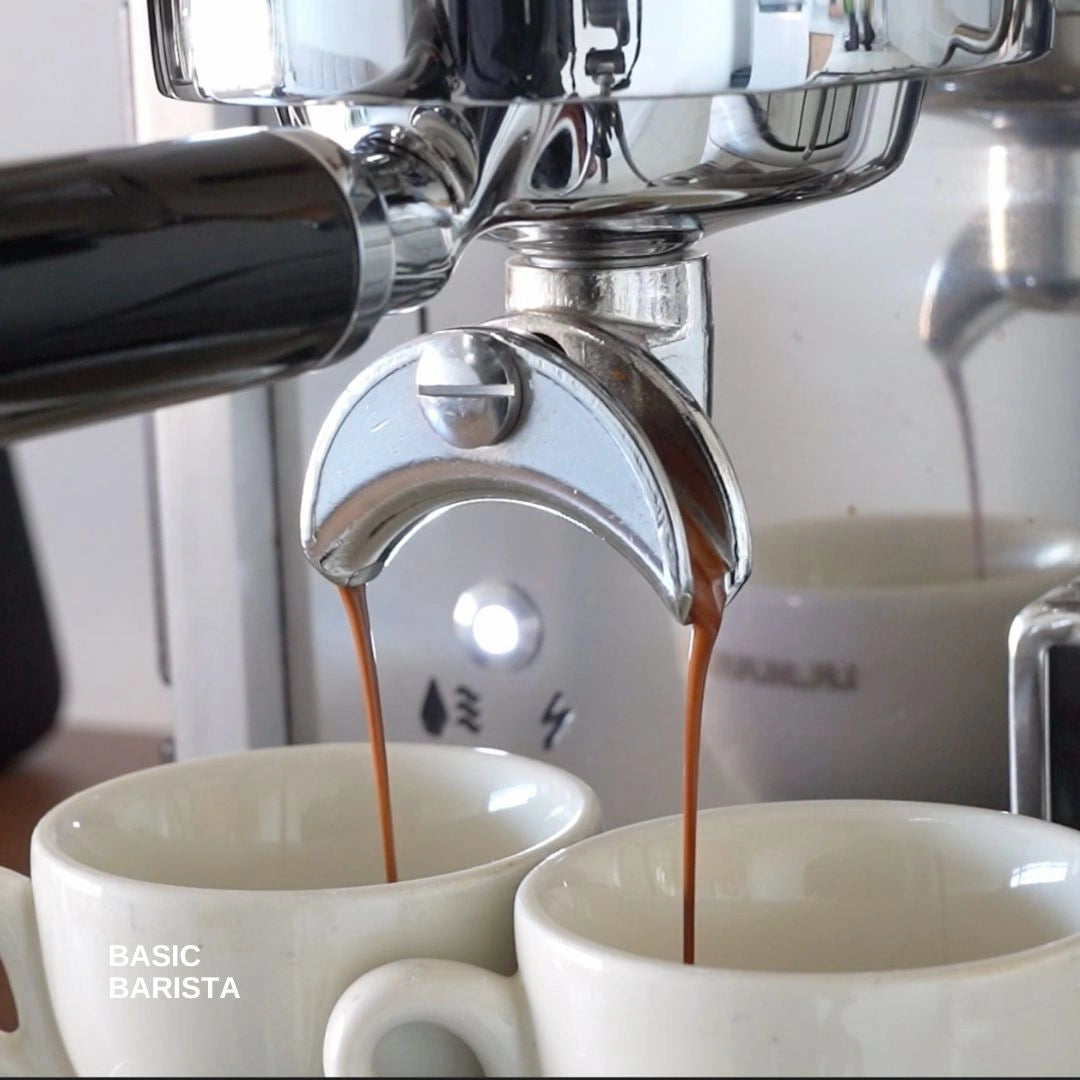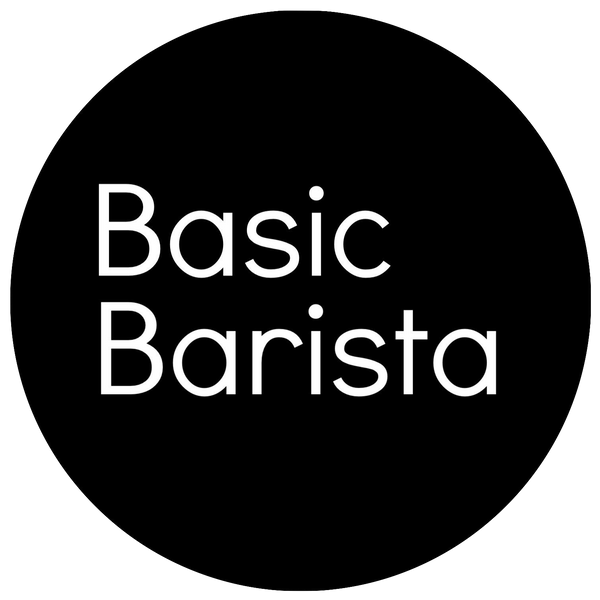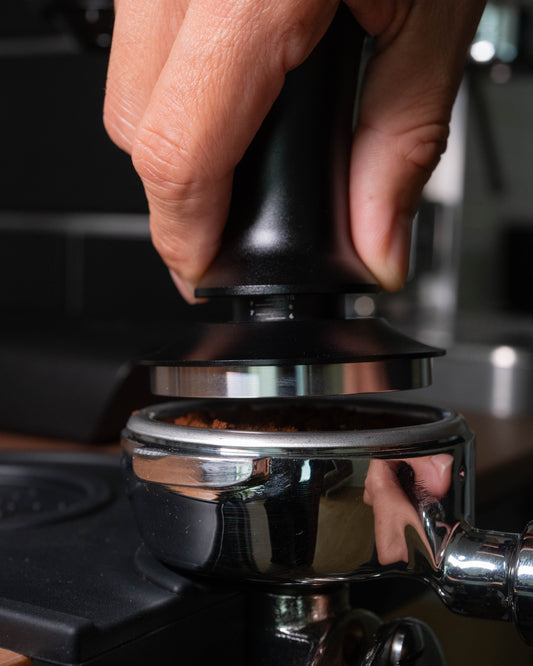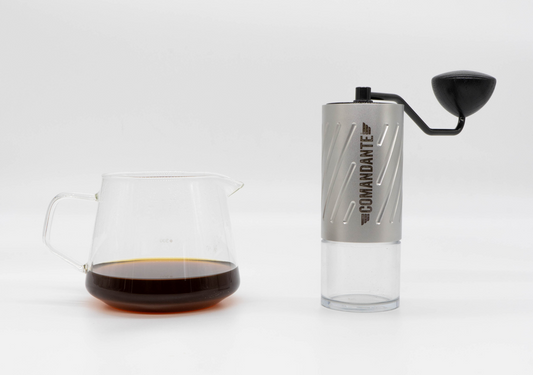
How to Become a Barista - Barista Basics
Estimated read time: 8 minute
Share this article
What is a Barista’s Role and Responsibilities?
A barista is more than just someone who makes coffee. They are a crucial part of the coffee shop experience, responsible for creating and tailoring coffees, maintaining and cleaning equipment and ensuring highest possible customer satisfaction. It is important to know that every cafe is different and has different values / expectations for their baristas.
In this guide we will aim to cover the basics of what it means to be a barista and some of the main expectations that baristas are expected to perform.
What Does a Barista Do Throughout the Day?
A typical day for a barista involves a blend of routine tasks and customer interactions. Here's a glimpse into a typical day of a barista in a Melbourne cafe:
- Opening Duties: Arriving early to set up the coffee station, including turning on machines, restocking supplies, preparing ingredients and setting the dining area up.
- Morning Rush: Handling a high volume of orders, making espresso drinks, and serving customers quickly and efficiently.
- Midday Maintenance: Cleaning and maintaining equipment, refilling supplies, and ensuring the work area remains tidy and stocked up.
- Afternoon Calm: Interacting with customers, experimenting with new drink recipes, and preparation for closing.
- Closing Duties: Cleaning all equipment, wiping down surfaces, disposing of waste, and restocking for the next day.
What Do You Have to Know to Become a Barista?
To become a proficient barista, you need to develop a broad range of skills and knowledge, including:
- Understanding coffee origins, varieties, coffee processing and tasting notes.
- Mastering espresso extraction and the principles of dialling in coffee.
- Learning how to steam and texture milk.
- Practicing latte art.
- Maintaining cleanliness and organisation in a busy environment.
- Developing strong customer service skills to create a welcoming atmosphere and experience.
How to Steam Milk for Coffee's
Steaming milk is a fundamental skill for any barista. Follow this step by step guide to achieve cafe quality milk, perfect for pouring great latte art!
- Fill the Pitcher: Fill your milk pitcher to about a third of its capacity with cold milk.
- Purge the Steam Wand: Briefly turn on the steam wand to remove any condensation and residual milk.
- Position the Wand: Submerge the steam wand just below the surface of the milk and turn on the steam.
- Stretch the Milk: Lower the pitcher to introduce air into the milk, creating more foam. Listen for a consistent hissing sound.
- Heat the Milk: Raise the pitcher to fully submerge the steam wand and continue heating the milk to around 60-65°C (140-150°F).
- Finalise Texture: Swirl the milk in the pitcher to incorporate the froth and achieve a smooth, velvety texture. You can also knock the jug on a table to remove any large air bubbles.
How to Pour Latte Art
Pouring latte art takes practice and patience. Most cafes, especially those in Melbourne will request that baristas know hot to do some basic latte art, it is not un-common to see in barista job advertisements requesting that baristas can confidently pour a rosetta. Here are some basic steps for creating the most common latte art patterns.
Basic Latte Art Patterns:
Monk’s Head: Start pouring from a higher position and gradually lower the pitcher as the cup fills. Move the pitcher slightly to create a symmetrical blob and then raise the pitcher higher to stop pouring.Love Heart: Pour a monk’s head, then pull the pitcher quickly to form a point at the bottom, this pulls the white section down and creates the point all in one action, resembling a heart shape.
Rosetta: Create your base and the lower the pitcher and move it back and forth in a sideways motion to create a leaf-like pattern. Finish by pulling through the centre quickly, just like you did with the love heart design.
Barista Cleanliness
Maintaining cleanliness is crucial for both hygiene and efficiency. Often whenever you think 'there is nothing to do', you can always be cleaning!
Make sure to note:
- Always Cleaning the Work Area: Regularly wipe down surfaces and remove any spills.
- Using a Cloth to Clean the Steam Wand: After each use, wipe the steam wand with a damp cloth and purge it to remove milk residue.
- Using Separate Cloths: Use different cloths for the steam wand and the bench to prevent cross-contamination.
- Clean the Grinder: Cleaning the grinder with a reusable air duster and brush helps to maintain consistency throughout the week and should be done when closing the cafe. when it is quite it doesn't hurt to use the air duster to remove the residual coffee grounds.
How to Dial in Espresso?
Dialling in espresso involves adjusting variables to achieve a desired flavour. Every coffee is different, and on top of this your coffee will need to be adjusted throughout the day as the ambient temperature and humidity change.
- Dose, Time, Yield: Measure the coffee dose, extraction time, and yield (final espresso volume) to keep tabs on what time and weight you are using.
- Grind Size, Water Temperature, Pump Pressure: Adjust the grind size, ensure the water is at a suitable temperature, and monitor your coffee machines pump pressure for optimal extraction.
- Pre-infusion / Pressure Profiling: Use pre-infusion to wet the coffee grounds before full pressure, and experiment with pressure profiling to enhance your coffees flavour complexity.
Volumetric Machines vs Weight
Most coffee machines fit into these two categories, volumetric machines and semi-automatic machined. Understanding the differences between volumetric machines and those that measure by weight is essential:
- Volumetric Machines: These measure the volume of water dispensed, offering consistency and ease of use.
- Weight-Based Machines: These provide more precision by measuring the weight of your coffees yield, allowing for finer adjustments to the brew ratio and more consistency.
After all, volumetric is not the same as weighing and can cause a lot of confusion around trying to dial in your coffee.
Understanding Coffee to Water Ratios and Coffee Recipes
The coffee-to-water ratio is critical for brewing balanced coffee. Common ratios include:
- Espresso: Typically 1:2 coffee to water ratio.
- Ristretto: Typically 1:1 coffee to water ratio.
- Pour-Over: Around 1:15 to 1:17 coffee to water ratio.
- Cold Brew (ready to drink): 1:15 coffee to water ratio.
- Cold Brew (Concentrate): 1:5 coffee to water ratio.
How to Make an Espresso Recipe Using Dose, Yield, Time:
Creating an espresso recipe involves balancing dose, yield, and extraction time:
- Dose: Measure the coffee dose, e.g, 20 grams.
- Yield: Determine the desired yield, e.g, 40 grams of espresso.
- Time: Aim for an extraction time of 25-30 seconds. Adjust these parameters to achieve the perfect shot, balancing sweetness, acidity, and bitterness.
When tasting coffee it is important to make note of what this is intended for, for example while an espresso is may be tasting really good as an espresso it might end up tasting weak when combined with milk in a Latte. This is normal and may result in having multiple recipes for one coffee bean.
Combining Techniques to Make Drinks
With your knowledge of espresso, milk texturing, and recipe creation, you can now make various coffee drinks:
How to Make a Latte:
- Pull a double or single shot of espresso into a latte glass.
- Steam milk to create micro foam.
- Pour the milk into the espresso, creating a smooth, creamy texture.
How to Make a Flat White (a Melbourne Classic):
- Pull a single shot of espresso (or double ristretto for a more intense flavour) into a ceramic cup.
- Steam milk to a velvety micro foam slightly less foam than the latte.
- Pour the milk over the espresso, leaving a thin layer of foam on top.
How to Make a Long Black:
- Fill a cup with hot water, generally long blacks are served in larger ceramic mugs for dine-ins.
- Pull a double shot of espresso directly into the hot water, avoid pulling the shot into a shot glass as this disrupts the crema.
How to Make a Cappuccino:
- Pull a single shot of espresso into a ceramic cup and dust with chocolate powder.
- Steam milk to create a thicker, frothy foam.
- Pour the milk into the espresso, creating a thick layer of foam on top.
- Dust with some more chocolate on top if preferred.
How to Make a Magic Coffee:
- Pull a double ristretto shot into a latte glass.
- Fill the cup three-quarters full with steamed milk.
How to Make an Iced Coffee:
- Fill a large cup with Ice and milk of choice.
- Pull a double shot of espresso directly into the milk, avoid pulling the shot into a shot glass as you want the espresso to sit on top and not loose any cream.
- Using a spoon or the straw, stir 3 times around the edge of the cup to combine the drink just enough.
Basic Customer Variations
Accommodating customer preferences is part of being a good barista, and while it may hurt to add 10 sugars to an extra hot latte the priority is to make the customer exactly what they want! Common customer variations include:
- Using Different Milks: Most cafes offer a range of different milks to use instead of full cream milk such as oat, skinny, almond, soy as well as some not-so common milks such as macadamia milk, hemp milk, coconut milk and even blends of different alt milks.
- Half Full, 3/4 Full: Some customers want a 'stronger tasting' cup of coffee or just not as much milk in their coffee, whenever a customer orders a half or 3/4 full coffee it might be worth asking them if they would instead want a picolo. At the end of the day, it is up to what the customer wants.
- Extra Hot: While making coffee too hot can affect flavour, it's important to prioritise the customers satisfaction by heating their drink as requested. Be understanding that for some people their sense of taste is different to yours and that what we may find 'too hot' they find ' luke-warm'. Having a thermometer on hand is always useful for when customers order coffee with milk of an exact temperature.
Steaming Alternative Milks
Unfortunately with different milks comes different techniques, each milk does come with it's own set of challenges and don't worry it's not just you, that soy milk might seem impossible to pour latte art with but here are some tips that can help.
- Don't steam Soy milk too hot, hotter soy milk can start to solidify and will be near impossible to pour into coffee without it starting to seperate.
- Create a neutral PH, I wish I learnt this when I was first making coffees.
- The PH of your espresso is very different from your milk, by adding a small amount of your milk to your espresso and swirling / stirring it before pouring the rest of your milk you're able to get the PH of everything closer and avoid your milk separating.
Customer Service
- The Customer is Always Right, Unless They Aren’t: Strive to meet customer expectations, but maintain professional boundaries when necessary.
- How to Respond to Negative Feedback: Address complaints with empathy and offer solutions. For example, if a customer complains about the temperature of their coffee, offer to remake it to rectify the situation.
- How to Learn from Feedback: Use feedback to improve your skills and service. Reflect on what you can do better next time. Putting in effort shows and will go a long way to making the cafe successful.
- You Can’t Make Everyone Happy: Accept that some customers may be unsatisfied despite your best efforts. Focus on providing consistent, high-quality service.
No Such Thing as a Dead Shot (When shouldn't you serve and Espresso)
A common myth in cafes is the famous 'dead shot', most people belive that a shot of espresso that is left for over 5 minutes is 'dead', while it may be cooled down and doesn't have a full crema it is still perfectly fine to serve in a latte, flat white or cappuccino.
This being said, do not serve this for a long black or an espresso as this will surely be sent back.
How to find a Barista job in Melbourne?
It may be challenging and intimidating to put yourself out there and find a job as a barista in Melbourne.
Consider looking at places like Seek and Indeed as cafe owners and managers upload available positions daily.
While applying for jobs it is important to work out your availability, how much you want to earn and understand some expectations around becoming a barista in a Melbourne Cafe. Create a resume that highlights your strengths and areas you are looking to improve as well as detailing who you are and what your values are relevant to the position.
While online is a great way to reach out to cafes looking for employees, it could also be worth your while to walk into a cafe and hand in a print out of your resume. This is a great way to make a first impression and put a face to the name.
If you do decide to do this please be considerate of busy staff, try to visit when the cafe is not busy and be understanding that the person you may be talking to might need to rush you out to continue serving customers.








